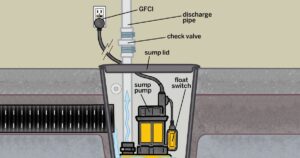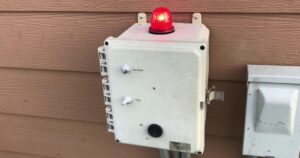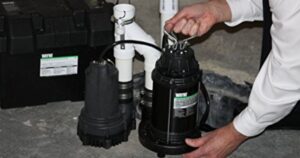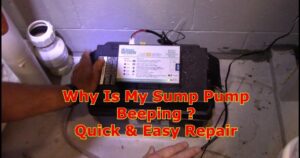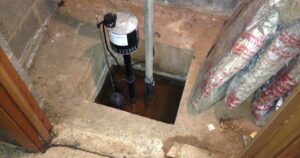In the realm of sump pumps, a simple yet essential question lingers: Do they possess a reset button? Much like a compass guiding a lost traveler, this article aims to navigate the intricate workings of sump pumps and unveil the truth behind this enigma. By delving into their functionality, identifying potential issues, and exploring the various components, we will equip you with the knowledge to troubleshoot and potentially resolve any sump pump failures. Join us on this informative expedition as we unravel the mystery of the reset button.
Key Takeaways
- Sump pumps do not typically have a reset button.
- Common issues with sump pumps include failure to turn on or off, continuous running, unusual noises, and ineffective water removal.
- Troubleshooting steps for sump pump failure include checking the power supply, inspecting the float switch, checking the discharge pipe, and testing the pump.
- Alternative solutions for sump pump problems include installing a backup sump pump system and a water alarm system for early warning.
Understanding the Function of a Sump Pump
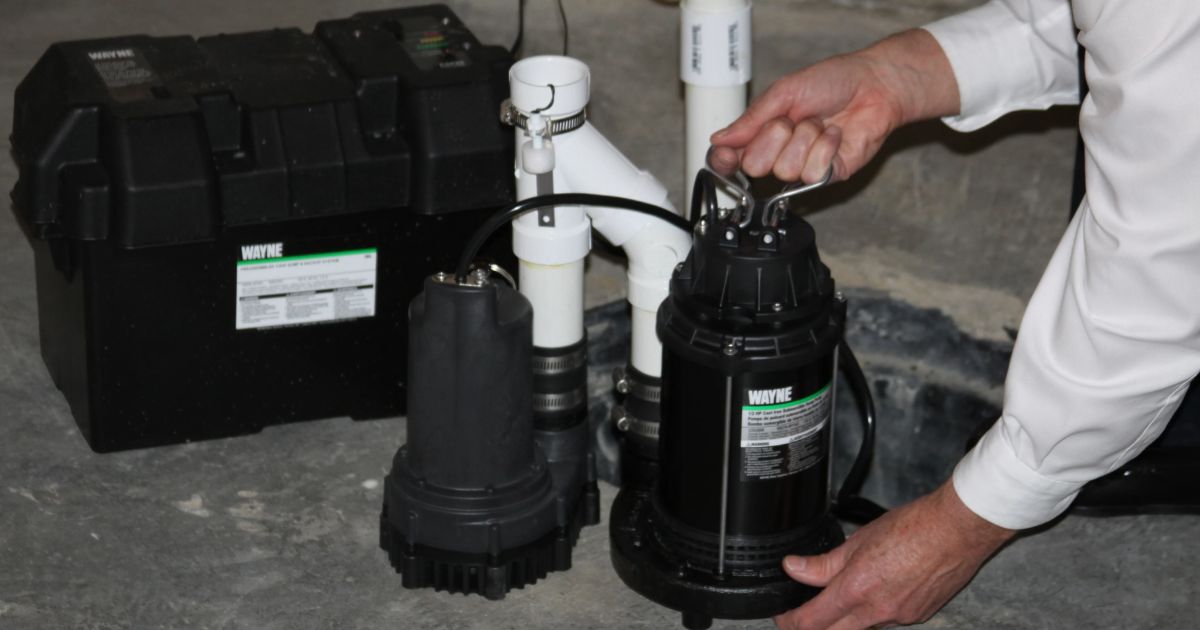
The function of a sump pump is to remove excess water from basements or crawl spaces by pumping it out to prevent flooding and water damage. It is an essential tool for homeowners in areas prone to heavy rainfall or high water tables. Sump pumps are typically installed in a pit or sump basin, which collects water that seeps into the basement or crawl space.
When the water level in the pit rises to a certain point, a float switch activates the pump, causing it to turn on and start pumping out the water. The pump then directs the water away from the foundation and into a designated drainage area, such as a storm drain or a dry well. This process helps to keep the basement or crawl space dry and free from water damage, protecting the structure and belongings within.
Identifying Common Sump Pump Issues
Common sump pump issues can be easily identified by understanding their symptoms and potential causes. One common issue is when the pump fails to turn on or off. This could be due to a faulty float switch or a malfunctioning pump motor.
Another issue is when the pump runs continuously, which may indicate a problem with the float switch or a high water level in the sump pit. Additionally, if the pump is making unusual noises, such as grinding or vibrating, it could be a sign of a worn-out impeller or motor bearings.
Lastly, if the sump pump is not effectively removing water from the pit, it may be due to a clogged or damaged discharge pipe. Identifying these common issues promptly can help prevent basement flooding and ensure the proper functioning of the sump pump system.
Exploring the Components of a Sump Pump

To understand the functionality of a sump pump, it is important to explore its various components and their roles in the system. The main components of a sump pump include the sump pit, the pump itself, a float switch, and a discharge pipe.
The sump pit is a basin or container that collects water from the surrounding area. The pump is responsible for removing the water from the pit. It is typically a submersible pump that can handle the water volume and pressure. The float switch is a crucial part of the sump pump, as it activates the pump when the water level rises and deactivates it when the water level recedes.
Finally, the discharge pipe is used to direct the water away from the foundation of the building. Understanding these components will help homeowners maintain and troubleshoot their sump pump effectively.
Steps to Troubleshoot a Sump Pump Failure
When troubleshooting a sump pump failure, homeowners can start by checking for common issues that may be causing the malfunction. The first step is to ensure that the pump is receiving power by checking the circuit breaker and reset switch.
If the power supply is not the problem, the next step is to inspect the float switch and ensure it moves freely. Sometimes, debris can obstruct the switch, preventing it from activating the pump. Additionally, homeowners should check the discharge pipe for any clogs or obstructions that may impede the flow of water. It is also crucial to inspect the check valve to ensure it is functioning correctly.
Lastly, testing the pump by pouring water into the sump pit can help determine if the pump is working properly. By following these troubleshooting steps, homeowners can identify and resolve common issues with their sump pump.
Alternative Solutions for Sump Pump Problems
An effective approach for addressing sump pump problems is by utilizing alternative solutions. While troubleshooting and maintenance can help resolve many issues, there are instances where alternative solutions may be necessary.
One option is to install a backup sump pump system. This system acts as a secondary pump that activates when the primary pump fails or is overwhelmed. Backup systems can be battery-powered or use water pressure to operate, ensuring continuous functionality even during power outages. Another alternative is to install a water-powered backup sump pump. These pumps use the water pressure from the municipal water supply to remove water from the sump pit.
Implementing a water alarm system can provide an early warning for potential sump pump failures, allowing homeowners to take prompt action and prevent further damage. These alternative solutions provide homeowners with added peace of mind and ensure the sump pump system functions optimally in any situation.
Professional Maintenance and Repair Options
One option for addressing sump pump problems is to enlist the services of professional technicians for maintenance and repairs. Sump pump maintenance is crucial to ensure proper functioning and prevent any potential issues.
Professional technicians have the expertise and knowledge to perform thorough inspections, identify problems, and provide appropriate solutions. They can inspect the pump’s components, including the motor, impeller, and float switch, and clean or replace any damaged parts. Additionally, they can check the discharge pipe for clogs or leaks and ensure proper drainage.
If any repairs are needed, professional technicians can efficiently handle them, ensuring that the sump pump operates effectively. Regular maintenance and timely repairs by professionals help prolong the lifespan of the sump pump and provide peace of mind to homeowners.
Frequently Asked Questions
Can I Install a Sump Pump Myself, or Should I Hire a Professional?
When considering the installation of a sump pump, it is important to weigh the benefits and potential risks. While a DIY approach may save money, hiring a professional ensures proper installation and adherence to local building codes.
How Often Should I Test My Sump Pump to Ensure It Is Functioning Properly?
To ensure proper functionality, it is recommended to test sump pumps regularly. This helps identify any potential issues and ensures the pump is operational when needed. Testing frequency can vary, but every few months is generally advised.
Are There Any Precautions I Should Take to Prevent My Sump Pump From Freezing During Winter Months?
To prevent sump pump freezing during winter, precautions include insulating the discharge pipe, ensuring proper drainage, and installing a sump pump cover. These measures can help maintain the functionality of the pump and prevent damage.
Can I Use My Sump Pump to Remove Water From My Swimming Pool or Hot Tub?
Yes, sump pumps can be used to remove water from swimming pools or hot tubs. However, it is important to ensure the pump is suitable for handling the type of water and that proper precautions are taken to prevent damage.
Is It Possible to Use a Backup Power Source for My Sump Pump in Case of a Power Outage?
In the event of a power outage, it is indeed possible to use a backup power source for a sump pump. This ensures continuous operation and prevents flooding in the basement or other areas.
Conclusion
In conclusion, sump pumps are crucial for preventing basement flooding and water damage. While they do not have a reset button, understanding their function and identifying common issues can help troubleshoot failures. Exploring the components and considering alternative solutions can also be beneficial. When all else fails, seeking professional maintenance and repair options is recommended. Remember, a well-maintained sump pump is a homeowner’s best friend in the battle against water intrusion. Read more ” is sump pump smell toxic? “

